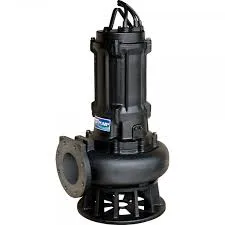Icelandic
- Afrikaans
- Albanian
- Amharic
- Arabic
- Armenian
- Azerbaijani
- Basque
- Belarusian
- Bengali
- Bosnian
- Bulgarian
- Catalan
- Cebuano
- Corsican
- Croatian
- Czech
- Danish
- Dutch
- English
- Esperanto
- Estonian
- Finnish
- French
- Frisian
- Galician
- Georgian
- German
- Greek
- Gujarati
- Haitian Creole
- hausa
- hawaiian
- Hebrew
- Hindi
- Miao
- Hungarian
- Icelandic
- igbo
- Indonesian
- irish
- Italian
- Japanese
- Javanese
- Kannada
- kazakh
- Khmer
- Rwandese
- Korean
- Kurdish
- Kyrgyz
- Lao
- Latin
- Latvian
- Lithuanian
- Luxembourgish
- Macedonian
- Malgashi
- Malay
- Malayalam
- Maltese
- Maori
- Marathi
- Mongolian
- Myanmar
- Nepali
- Norwegian
- Norwegian
- Occitan
- Pashto
- Persian
- Polish
- Portuguese
- Punjabi
- Romanian
- Russian
- Samoan
- Scottish Gaelic
- Serbian
- Sesotho
- Shona
- Sindhi
- Sinhala
- Slovak
- Slovenian
- Somali
- Spanish
- Sundanese
- Swahili
- Swedish
- Tagalog
- Tajik
- Tamil
- Tatar
- Telugu
- Thai
- Turkish
- Turkmen
- Ukrainian
- Urdu
- Uighur
- Uzbek
- Vietnamese
- Welsh
- Bantu
- Yiddish
- Yoruba
- Zulu
Telephone: +86 13120555503
Email: frank@cypump.com
sep . 21, 2024 15:30 Back to list
submersible pum
Understanding Submersible Pumps Functionality and Applications
Submersible pumps are specialized devices designed to operate underwater, primarily used for moving fluids from one location to another, usually from a lower level to a higher one. Their unique design allows them to be submerged directly in the fluid they are pumping, which makes them highly effective in various applications. This article delves into the functionality, components, and applications of submersible pumps, shedding light on why they are indispensable in many sectors.
Functionality and Design
Submersible pumps work by converting electrical energy into hydraulic energy, enabling them to push water or other fluids to the surface. The key components of these pumps include an electric motor, impellers, and a sealed casing. The motor is typically located at the bottom of the pump, submerged in the fluid, which helps with cooling and lubrication. This configuration allows for efficient operation with minimal cavitation, which can occur when a pump is operated above water level.
One of the significant advantages of submersible pumps is their ability to handle a variety of fluid types, from clean water to thick sludge or even corrosive liquids. The design varies depending on the intended use, with pumps tailored for specific environments, such as those equipped with wear-resistant materials for abrasive fluids.
Applications of Submersible Pumps
Submersible pumps find applications in an extensive range of sectors
submersible pum

1. Wastewater Management These pumps are crucial in municipal and industrial wastewater systems. They transport sewage and stormwater to treatment facilities, ensuring efficient waste management and reducing environmental impact.
2. Agriculture In agricultural settings, submersible pumps are used for irrigation purposes. They can extract groundwater for crop irrigation or supply water for livestock, making them vital in regions where surface water is scarce.
3. Construction During construction projects, submersible pumps are employed to remove excess water from excavation sites or to dewater flooded areas. They help maintain a dry working environment, which is essential for safety and project timelines.
4. Mining In the mining industry, submersible pumps are used for dewatering operations. They efficiently remove water from mines, ensuring that operations can continue without interruption.
5. Residential Use Homeowners often use submersible pumps for various applications, such as sump pumps for basements or garden irrigation systems. Their compact size and effectiveness make them a popular choice for residential water management.
Conclusion
Submersible pumps are versatile and efficient solutions for moving fluids across various applications. Their design allows them to operate safely and effectively underwater, making them ideal for wastewater management, agriculture, construction, mining, and residential use. As technology continues to evolve, submersible pumps will likely see advancements that enhance their efficiency and adaptability, further solidifying their role as essential tools in fluid management. Understanding the functionality and applications of these pumps is vital for anyone involved in industries that depend on fluid transportation.
-
ISG Series Vertical Pipeline Pump - Chi Yuan Pumps | Advanced Hydraulic Design&Durable Construction
NewsJul.31,2025
-
ISG Series Vertical Pipeline Pump - Chi Yuan Pumps | Energy Efficient & Low Noise
NewsJul.31,2025
-
pipeline pump - Chi Yuan Pumps Co., LTD.|High Efficiency&Low Noise
NewsJul.31,2025
-
ISG Series Vertical Pipeline Pump - Chi Yuan Pumps Co., LTD.|High Efficiency, Energy Saving, Low Noise
NewsJul.30,2025
-
ISG Series Vertical Pipeline Pump- Chi Yuan Pumps|High Efficiency&Low Noise
NewsJul.30,2025
-
ISG Series Vertical Pipeline Pump-Chi Yuan Pumps Co., LTD.|High Efficiency&Energy Conservation
NewsJul.30,2025










